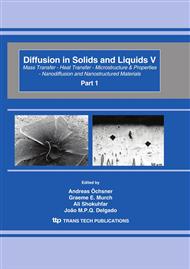p.82
p.88
p.93
p.97
p.105
p.111
p.117
p.126
p.132
Mathematical Modeling of Squeeze Casting of Magnesium Alloy AM50
Abstract:
In this study, a two-dimensional (2-D) mathematical model was developed to simulate forced and natural convection, heat transfer and solidification occurring during the squeeze casting process. The model was based on the control-volume finite difference approach and on the enthalpy method. The computation was performed to understand the effect of applied pressures on the solidification and cooling behavior of a cylindrical squeeze casting of magnesium alloy AM50A which could have extensive usage in automobiles. The model computed the melt flow fields, the temperature distributions, the cooling curves, the shape and position of the phase front, and total solidification time of the casting. The predicted results show that high applied pressures result in high heat transfer across the casting/die interface, and consequently increase solidification and cooling rates.
Info:
Periodical:
Pages:
105-110
Citation:
Online since:
April 2010
Authors:
Keywords:
Price:
Сopyright:
© 2010 Trans Tech Publications Ltd. All Rights Reserved
Share:
Citation:


